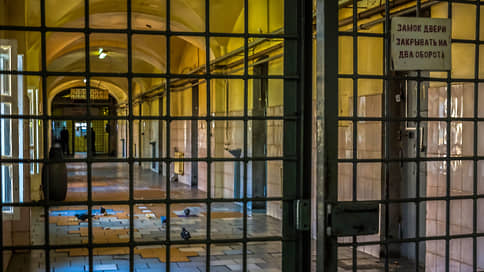Sit for a while – Newspaper Kommersant No. 46 (7491) of 03/20/2023
[ad_1]

Moscow pre-trial detention centers are overcrowded by 17.6%, said the capital’s Ombudsman Tatyana Potyaeva. Aleksey Melnikov, a member of the Presidential Council for Human Rights, believes that in reality the figure could be twice as high, but those arrested are transferred to other regions until a court decision. Human rights activists in the Tambov and Rostov regions, as well as in the Crimea, report overcrowding in the pre-trial detention center.
Last week, Moscow Ombudsman Tatyana Potyaeva reported that the overcrowding rate of Moscow pre-trial detention centers was “rather high” – the filling limit was exceeded by 17.6%. Ms. Potyaeva suggested that it would be possible to bring the detention centers “in line with the established requirements” after the “completion” of SIZO No. 7 in Verkhnye Polya and the repair of the cell premises of SIZO No. 1 (Matrosskaya Tishina Street). Until this happens, prisoners are often transferred to neighboring regions. Recall that in May last year, a member of the Presidential Council for Human Rights (HRC) Eva Merkacheva spoke about the “terrible limit” of the capital’s pre-trial detention centers. According to her, more than 11 thousand people are kept in eight detention centers designed for 9 thousand prisoners (overcrowding is about 22%). In August 2022, the Federal Penitentiary Service confirmed the overcrowding of a number of detention facilities, while specifying that, in general, Russian pre-trial detention centers are 96% full.
Both human rights activists and officials offered to solve the problem at the expense of those arrested under economic articles – by choosing house arrest or undertaking not to leave for those accused of non-violent crimes. In February 2023, President Vladimir Putin spoke about the same. Member of the HRC, executive secretary of the Public Monitoring Commission (POC) of Moscow Alexey Melnikov explains: in the capital, “people are being transferred to other regions at an accelerated pace even before the court decision comes into force.” This is illegal, but it allows to unload the detention centers: if not for this practice, the level of overflow of detention centers in Moscow would be 30%, Mr. Melnikov notes. He emphasizes that many accused of economic crimes have been waiting for a sentence for years, and the Federal Penitentiary Service spends money on their maintenance, medical expenses and transportation to the courts: “I saw a man who is in jail for fraud of 45 thousand rubles. damage. Another two years waiting for a sentence for damages of 170 thousand rubles. Why not release them on bail? In the event of a violation of the conditions of the bail, this money would go to the benefit of the state.”
As Kommersant was convinced, in a number of regions the problem of overflow of insulators also remains. In the Tambov region, the overcrowding rate in two SIZOs is 15% and 18%. According to Kommersant, the regional department of the Federal Penitentiary Service is going to solve the problem by creating additional cameras. In the Rostov region, there is an excess of prisoners in the pre-trial detention center due to the closure of one of the five detention centers. About 500 people arrested from there were transferred to neighboring regions, including the Chechen Republic. The chairman of the regional POC, Igor Omelchenko, speaks about the “large number” of transit convicts and the “arrest” bias of justice: “Pregnant women, the elderly and sick people, as well as those who have committed crimes of an economic nature, are sent to the pre-trial detention center. In fact, the responsibility for overcrowding in the pre-trial detention center lies not with the Federal Penitentiary Service, but with investigators and judges who send people under arrest rather as a preventive measure.”
The only SIZO-1 in Crimea is designed for 800 people, but now, according to Kommersant’s sources, there are about 1.5 thousand people there. The Department of the Federal Penitentiary Service for the Tomsk region reports that two regional pre-trial detention centers are designed for 1,189 people, but there are currently 1,125 people in them. In Primorye, four detention centers are 80.4% full; in the only pre-trial detention center of the Jewish Autonomous Region today there are 193 people with a norm of 300 prisoners. In the pre-trial detention center of the Amur Region, the requirement for the limit was reduced from 989 to 655 people, but the department of the Federal Penitentiary Service was unable to quickly clarify how many people are currently being held in the detention center. The head of the Amur PMC, Alexander Makhrov, told Kommersant that “the limit in the institution is small, uncritical, there have been no complaints from the special contingent about this.” The department of the Federal Penitentiary Service for Buryatia reported that there are enough places in the pre-trial detention center, the filling limit has not been exceeded. At the same time, the regional POC adds that complaints are often related to the conditions of detention, especially in the pre-trial detention center of Ulan-Ude. In the Irkutsk region, human rights activists describe the problem of overcrowding in pre-trial detention centers as “systemic and unsolvable for several years”, and the situation is especially acute in Irkutsk, where the isolation ward, built in the 19th century, has no room for expansion.
[ad_2]
Source link








